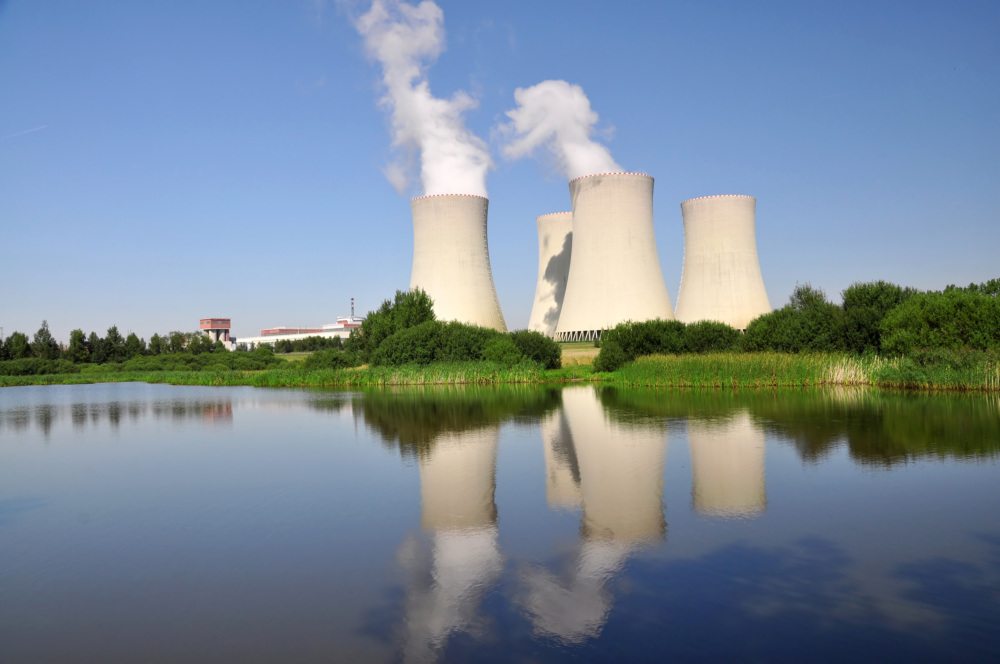
Laura S. H. Holgate Ambassador (ret.)
Vice President, Materials Risk Management
Laura Holgate
Vice President for Russia/New Independent States Programs
Nuclear Threat Initiative
50th IAEA General Conference Special Event
New Framework for the Utilization of Nuclear Energy in the 21st Century: Assurances of Supply and Nonproliferation
As you learned this morning, the Nuclear Threat Initiative has presented what we believe is a bold challenge and call to action for member states to take a concrete step towards fuel supply security. Earlier this morning, Senator Nunn provided the rationale behind this proposal; what I will do is offer some additional detail of our thinking and suggest areas where further discussions and analysis will be required.
NTI is prepared to contribute $50 million to the IAEA to help create a low enriched uranium stockpile owned and managed by the IAEA. We envision that this stockpile would be available as a last-resort fuel reserve for nations that have made the sovereign choice to develop their nuclear energy based on foreign sources of fuel supply services—and therefore have no indigenous enrichment facilities.
NTI’s contribution is contingent on two conditions, provided they are both met within the next two years: (1) that the IAEA takes the necessary actions to approve establishment of this reserve; and (2) that one or more member states contribute an additional $100 million in funding or an equivalent value of low enriched uranium to jump-start the reserve.
Nothing in NTI’s proposal would limit the rights of nations to pursue peaceful nuclear technology. Our proposal is designed to reinforce the sovereign choice of nations who decide to rely on foreign sources of nuclear fuel. I also want to make clear that the reserve must be designed so as to avoid any interference in the historically efficient and effective operation of nuclear fuel markets.
I want to emphasize that the specific elements of the reserve’s arrangements would be up to the IAEA and its member states to decide. NTI’s only conditionalities are that the IAEA take steps to authorize the reserve and member states match NTI’s award on a two-to-one basis. Nevertheless, a number of issues will need to be worked out by the IAEA and member states; I will outline some of these issues today.
Reserve contents
One of the first decisions to be made will be the reserve’s contents. In order to maximize the flexibility of the reserve, it should probably be in the form of uranium hexafluoride, at an enrichment of 4.9 percent. It would not seem realistic to conceive of a reserve that holds manufactured fuel rods or assemblies given the uncertainty about the customers who would actually need to use the material.
We believe that the minimum credible amount of low enriched uranium held by this reserve would need to be enough LEU for a full core for a standard power reactor. This should be in the range of 50-60 metric tons at 4.9% enrichment. NTI’s $50 million contribution combined with the additional $100 million from member states would confidently cover the fuel requirements for at least one full core for a standard nuclear power plant, plus transportation and storage costs. The ultimate quantity of low enriched uranium held by the IAEA as a reserve would have to be determined through an iterative process involving supplier states, customer states, and the IAEA to determine how much uranium is needed to reassure potential customers while avoiding undue market interference. One would expect this reserve to grow as the nuclear power market grows in the future.
NTI has been in discussions with Russia on the potential for an initial purchase of low enriched uranium for this reserve, but there are several sources of such material. To the degree that the low enriched uranium that goes into the reserve is derived from blending down highly enriched uranium, that would be another nonproliferation benefit, but it is not necessary to the effective functioning of the reserve.
Storage
Another issue for decision is the location of the reserve. Obviously, the IAEA cannot house an LEU reserve in its Vienna headquarters—a member state would have to serve as the host country for the reserve. In order to be seen as a true back-up to an extant commercial fuel service contract, the reserve almost certainly has to be based outside the six major fuel suppliers. The ideal location would be in a facility that is already licensed to handle low enriched uranium hexafluoride, in order to minimize the need to create new infrastructure. It is inconceivable that material owned by the IAEA would not be stored under IAEA safeguards, and the Agency might determine that an Additional Protocol would also need to be in force. The Agency might further determine that membership in the Nuclear Safety Convention and the Convention on Physical Protection of Nuclear Materials would also be required of the host nation. The costs of storage could be borne by the Agency via a contract with the storage site operators or provided as an “in kind” donation by the host nation, and would be subject to the safety and security regulation of the host state. As the reserve’s stocks grow over time, there may be value in having more than one host state as an additional measure of reassurance to potential customer states.
Access
The terms of access would be among the most sensitive aspects of this reserve, and as such would be an extremely important issue to discuss among member states. A key requirement is likely to be that a state wishing to avail itself of the reserve meet their nonproliferation obligations. As with the storage considerations I just mentioned, the LEU supplied by the IAEA would almost certainly have be used in a reactor that is under IAEA safeguards, and an Additional Protocol might also be required. Participation in the Nuclear Safety Convention and the Convention on Physical Protection of Nuclear Materials would also be reasonable expectations of a customer state. The most important attributes of the access conditions is that they be clearly delineated in advance, and that the judgment on whether a particular state meets the conditions be structured in such a way as to be objective, non-discriminatory, and non-political. This may require some novel decision-making techniques to insulate such decisions from political influence. For example, how would the determination of whether a potential customer state is “in good standing” in meeting its nonproliferation obligations be made? Would this be a Board of Governors decision, the Director General’s decision, or might a special panel made up of representative member states’ designated arbitrators make the determination? Some states may require that the release mechanism be established and that pre-approved drawing rights be considered and guaranteed before they are willing to rely on such provisions as a back-up to fuel imports.
Pricing
One key question in considering the impact of such a reserve on the commercial fuel market is the price at which states can gain access to the reserve’s LEU. Because the reserve would be designed to reinforce fuel import mechanisms, a contract will generally be in place when a disruption occurs that would trigger a customer state’s claim on the reserve. One approach that would guarantee market stability and predictability for customers would be to fix the price for the reserve’s LEU at the price contained in the existing contract that is not being fulfilled. If the contract price is significantly below market value, it might create challenges for the Agency to replenish the reserve and member states may be called on to make up the differences between contract price and real-time market prices, but it would prevent states from manufacturing a commercial supply dispute in hopes of obtaining a more favorable price from the Agency’s reserve.
Fabrication
As noted above, the diversity of reactor types among potential customer states argues against holding manufactured fuel in the reserve itself, but that means that the fabrication step needs to be addressed in the design of the reserve. If a state has a fuel import contract in place, fabrication will typically be included in that contract, likely at a different facility than the enrichment facility, and in some cases, in a different country. Whether or not access to fabrication services is threatened when an LEU supply breakdown occurs will differ from case to case. There may be value in developing pre-licensed alternative fabricators who can be turned to should the Agency’s LEU reserve be called on by a customer state. This complex issue will require further consideration by member states and industry experts.
Export control
Exports of nuclear materials and technologies are governed by a series of complex, interlocking national and international laws, procedures, and institutions. The basic premise of such rules is to ensure that exported nuclear materials are used only for peaceful purposes, and that they are not retransferred under conditions that weaken those assurances. States wishing to provide storage and fabrication services for the Agency’s LEU reserve would need to be prepared to make any necessary adjustments in their national export control procedures to guarantee timely and predictable transfer of the Agency’s LEU into and out of their national territory. Institutions such as the Nuclear Suppliers Group may also need to develop special procedures to ensure that the Group’s policies and practices accommodate the reliable administration of the reserve. This is another area which definitely needs an in-depth discussion among member states and experts to determine how to simultaneously assure eligible customer states that the LEU will be available to them when they need it, and supplier states that the material they donate or sell to the Agency will be appropriately used.
Path forward
These are some of the issues associated with establishing an IAEA fuel reserve, but we believe that they can all be managed and resolved in ways that satisfy potential customer states, supplier states, the nuclear industry and the Agency itself. There are undoubtedly others that will be encountered along the way. Again, I want to make clear that these ideas are offered in order to advance the discussion of an IAEA fuel reserve; decisions are, of course, the purview of the Agency and its member states. The key challenge is to begin right away to address these questions so that states can evaluate whether an IAEA fuel reserve meets their requirements for nuclear energy security. To this end, we encourage the IAEA Secretariat to carry out formal and informal consultations with member states and experts in order to prepare the matter for the Board of Governors’ consideration. As the demand for nuclear energy grows, we will need creative ways to avoid an associated growth in nuclear risks. All nations share an interest in ensuring a safer, more secure nuclear future.
Sign up for our newsletter to get the latest on nuclear and biological threats.
“The bottom line is that the countries and areas with the greatest responsibility for protecting the world from a catastrophic act of nuclear terrorism are derelict in their duty,” the 2023 NTI Index reports.
Establishment of multilateral approaches to the nuclear fuel cycle aimed at reducing the risk of proliferation and guaranteeing security of supply. (CNS)
At this critical juncture for action on climate change and energy security, 20 NGOs from around the globe jointly call for the efficient and responsible expansion of nuclear energy and advance six key principles for doing so.

